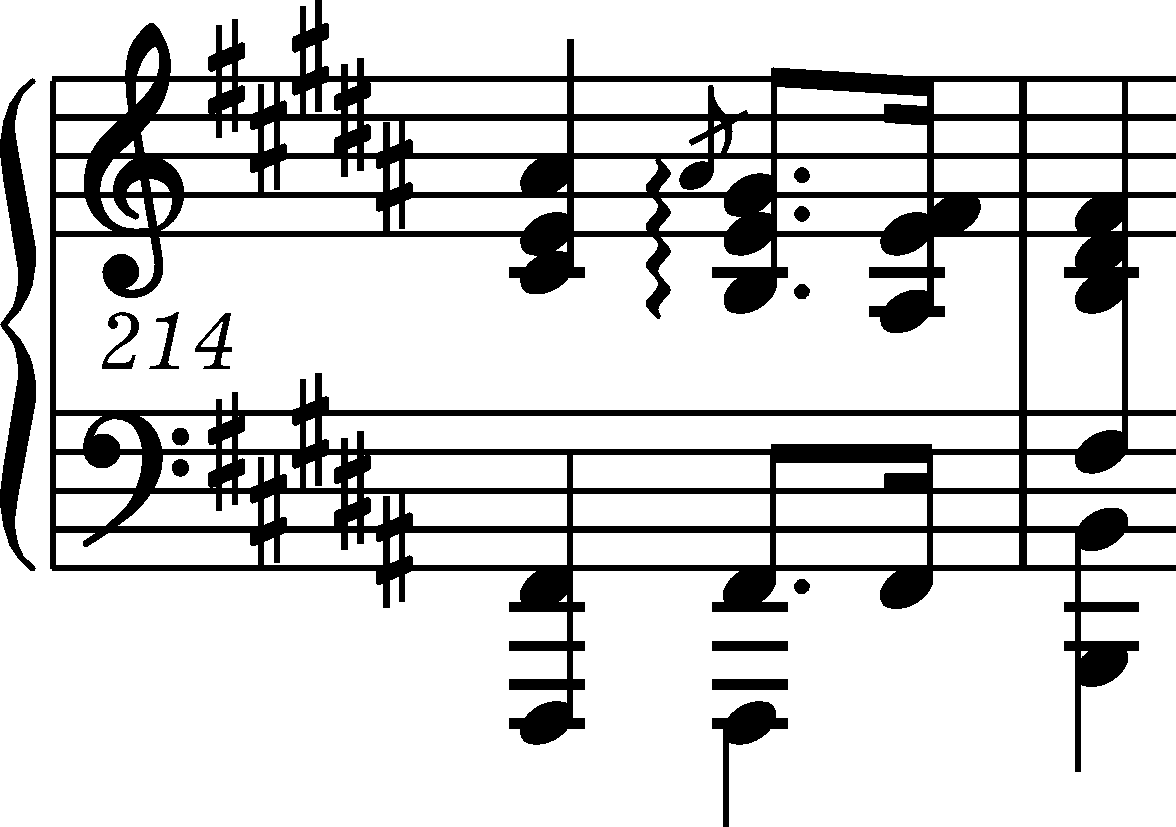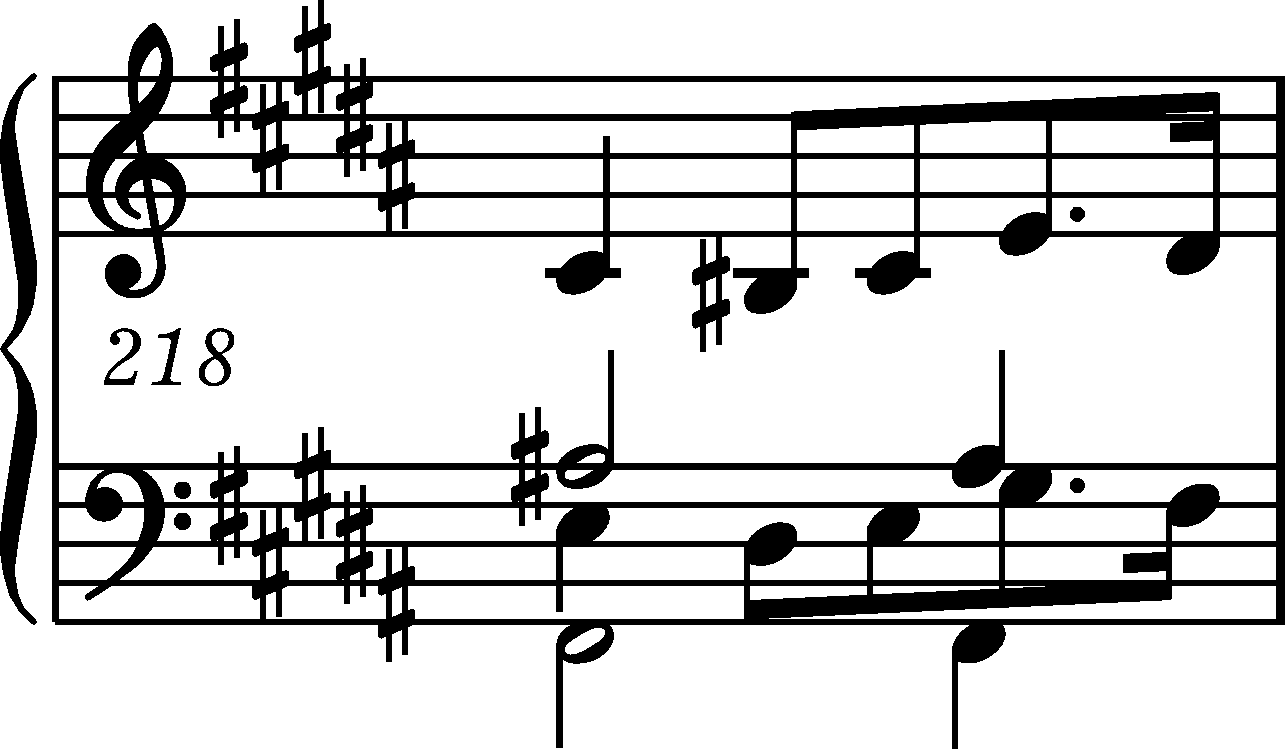



Rhythm
|
b. 210-211
|
composition: Op. 49, Fantaisie in F minor
..
The absence of the ties to the e1-c category imprint: Differences between sources issues: EE revisions , Errors in FE |
||||||||
|
b. 214
|
composition: Op. 49, Fantaisie in F minor
..
The deletions visible in A reveal that the decision concerning the 2nd and 3rd beats of the bar in the L.H. part was changed twice. Two versions were deleted, one of which – most probably the initial one – is identical to the final text (the F category imprint: Corrections & alterations; Source & stylistic information issues: Corrections in A , Chopin's hesitations , Deletions in A |
||||||||
|
b. 218
|
composition: Op. 49, Fantaisie in F minor
..
Both source versions must be authentic, and both resulted from corrections:
In this situation in the main text we give the FE version, having resulted from Chopin's most mature reflection; he eventually opted for the same version as in bar 202. category imprint: Differences between sources; Corrections & alterations issues: Corrections in A , Chopin's hesitations , Deletions in A , Accompaniment changes , Authentic corrections of FE |
||||||||
|
b. 219-220
|
composition: Op. 49, Fantaisie in F minor
..
As in bars 77-82 and analog., shifting the R.H. semiquaver beyond the 3rd quaver in the L.H. triplet was an arbitrary decision by the engravers of GE and EE, contrary to Chopin's understanding of such combinations. category imprint: Differences between sources issues: EE revisions , GE revisions , Dotted rhythms and triplets |
||||||||
|
b. 223
|
composition: Op. 49, Fantaisie in F minor
..
Chopin added the category imprint: Interpretations within context; Differences between sources; Corrections & alterations; Source & stylistic information issues: Corrections in A , Errors of A , Errors repeated in FE |

 2 sixth is most probably an oversight by the copyist or by the engraver of
2 sixth is most probably an oversight by the copyist or by the engraver of  .
. , in which he then crossed out both crotchets on the 3rd beat of the bar and added dots prolonging the minims;
, in which he then crossed out both crotchets on the 3rd beat of the bar and added dots prolonging the minims; in
in  in
in